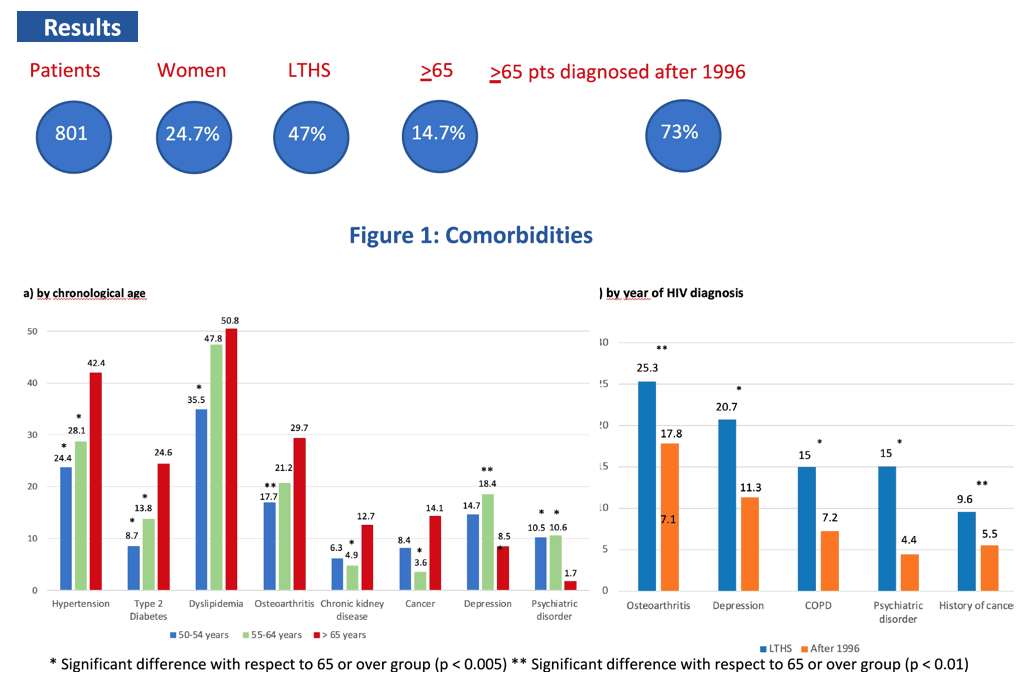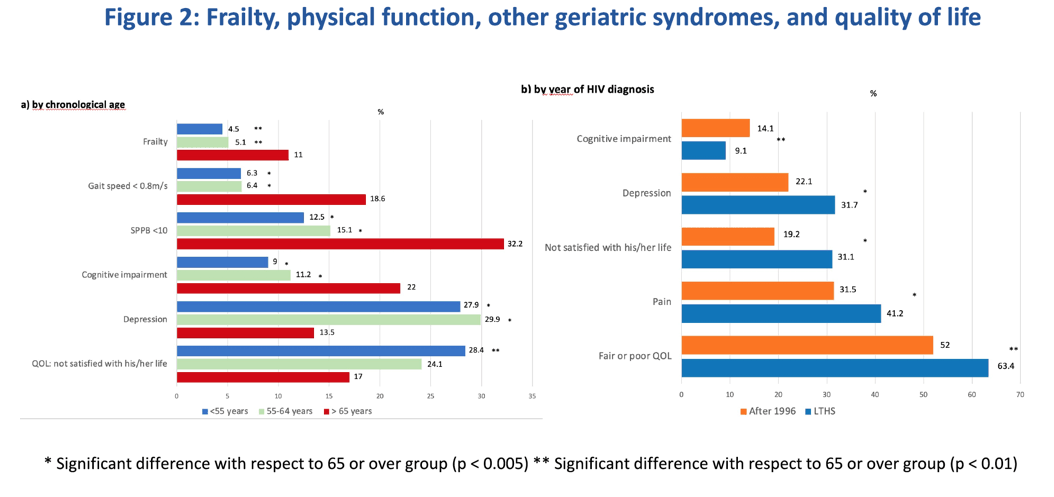 |
 |
 |
| |
Long-term HIV survivors and adults 65 or over with HIV: two separate profiles with different needs
|
| |
| |
18th European AIDS Conference
Download the PDF here
F. Branas1, M.J. Galindo2, M. Torralba3, A. Antela4, J. Vergas5, M. Ramírez6, P. Ryan1, F. Dronda7, C. Busca8, I. Machuca9, M.J. Bustinduy10, A. Cabello11, M. Sánchez-Conde7, FUNCFRAIL Study Group
1Hospital Universitario Infanta Leonor, Madrid, Spain, 2Hospital Clínico de Valencia, Valencia, Spain, 3Hospital Universitario de Guadalajara, Guadalajara, Spain, 4Hospital Universitario de Santiago, Santiago de Compostela, Spain, 5Hospital Clínico San Carlos, Madrid, Spain, 6Hospital Universitario Gregorio Maranón, Madrid, Spain, 7Hospital Universitario Ramón y Cajal, Madrid, Spain, 8Hospital Universitario La Paz, Madrid, Spain, 9Hospital Reina Sofía, Córdoba, Spain, 10Hospital de Donostia, San Sebastián, Spain, 11Fundación Jiménez Díaz, Madrid, Spain
Purpose or Objective
People 50 or over with HIV are considered older adults. We hypothesize that there should be differences among them according to their chronological age and the year of HIV diagnosis. The purpose of the study is to evaluate those differences.
Methods
Prospective multicenter cohort study, the FUNCFRAIL study (Spain). Patients 50 or over with HIV were included and stratified by chronological age (50-54, 55-64 years, and > 65) and by the year of HIV diagnosis (before 1996 [long-term survivors or LTHS] and after 1996 [HAART-era group]). We recorded sociodemographic data, HIV-related factors, comorbidities, frailty, physical function, and quality of life (QOL).
Results
We evaluated 801 patients, of whom 24.7% were women, 47.02% were LTHS, and 14.7% were 65 or over; 73% of the 65-or-over patients were diagnosed after 1996. No significant differences in immunovirological status were found based on the year of HIV diagnosis. The proportion of patients with no comorbidities decreased significantly with age. Higher rates of comorbidities among LTHS were more prevalent: COPD, past cancer, osteoarthritis, depression, and other psychiatric disorders. Despite the increased burden of comorbidity among LTHS, there were no differences between them and the HAART-era patients regarding frailty and physical function, but the prevalence of frailty and poor physical function was significantly higher among patients 65 or over. The comorbidities more prevalent among patients 65 or over were hypertension, diabetes, dyslipidemia, current cancer, and osteoarthritis. LTHS showed a significantly worse quality of life than HAART-era patients. No differences regarding QOL were found by chronological age groups.
Conclusion
It is important not to consider older adults with HIV as a homogeneous group. We must distinguish them according to the clearly differentiated profiles that emerge from our work to design approaches focused on their specific needs.


|
| |
|
 |
 |
|
|